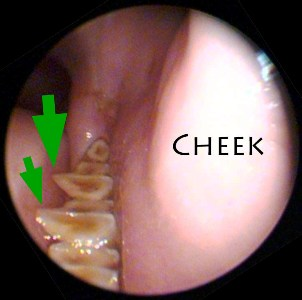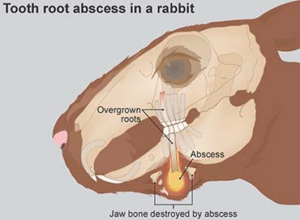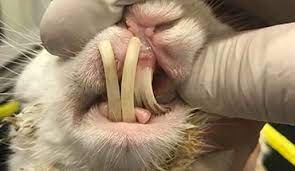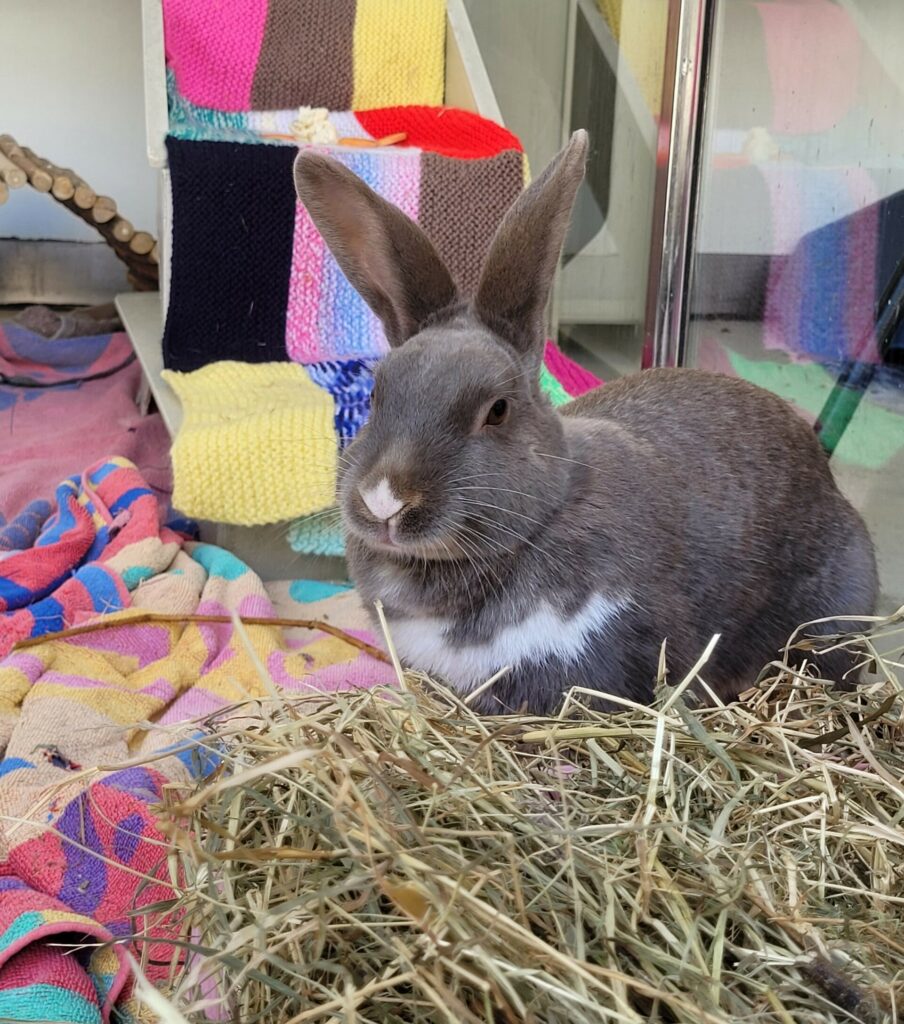
Rabbit’s are known for their sweet little chewing and whilst it may look cute, it also serves a very important purpose. Today’s blog entry is all about rabbit’s teeth, why this chewing is so important and how you can help keep your bunnies teeth nice and healthy.
A rabbit’s teeth are designed for chomping and chewing, and are made up of incisors which are good for snipping off pieces of grass, hay and other plants, before passing food backwards to the molars for chewing.
But for some unlucky bunnies their teeth don’t meet and this is known as malocclusion. This is more common in rabbits with round faces (lops and dwarf breeds in particular) as they don’t have enough room for their teeth. The face shape of a wild rabbit is more suited for their 28 teeth.
Rabbit’s teeth continually grow and are worn down by the action of chewing. If the upper and lower teeth don’t meet they will then grow unevenly, which can result in the incisors growing to astonishing lengths and the molars can develop spurs (sharp points).
These spurs will keep growing and will dig into their cheeks and tongue everytime they eat. This will be extremely painful and your rabbit will then be reluctant to eat, and if not treated this condition will be fatal.
Not only do your cute little bunnies have to contend with spurs, but a lot of rabbits also experience teeth problems below the gumline, in the bone of the jaw, resulting in root infections which often cause abscesses.
We advise getting your rabbit’s teeth checked every six months. Dental disease often goes unnoticed for a long time because rabbits instinctively hide pain and discomfort.


Symptoms of teeth problems in rabbits
Common symptoms often include:
- Weight loss
- A dirty bottom (grooming becomes difficult and painful)
- Diarrhoea or soft faeces
- Drooling
- Reduced appetite
- Weepy eyes
- Teeth grinding
- A bumpy jawline
- A runny nose
- Less active/quiet
- Long/deformed/broken teeth.
If you notice any of these please contact your vet straight away.
Please also take note of the images to the right.


Prevention

Hay, hay, hay is what your rabbit is calling out for!
The fibre in hay called ‘long fibre’ is great for your rabbit’s gut and helps it to work properly. Hay is also great for dental health as it needs to be chewed side to side, which helps wear down the molars.
Whilst pellets are a lovely extra to give your bunny, these are not chewed side to side, so don’t wear the molars down as effectively as hay. Adding a variety of fresh foods is great enrichment by offering different tastes, textures and smells.
If you have a fussy rabbit that isn’t too keen on hay, there are many different ways you can encourage your rabbit to eat it:
- Put hay in their litter tray or near where they toilet, so they can have a chew whilst going!
- Put hay in a shallow box and then put their favourite veg or pellets in between, so they have to forage.
- Add hay to any enrichment you give.
- Offer different types of hay, ready grass, timothy hay, alfalfa.


